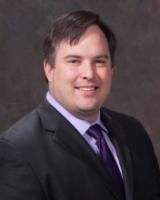
Dr. Matthew Smith is a Research Civil Engineer at the Engineer Research and Development Center (ERDC) for the U.S. Army Corps of Engineers (USACE). His research has been primarily in the areas of structural health monitoring (SHM) and seismic performance of steel structures. As focus area lead for SHM for the ERDC, he is developing and leading a research program to improve the technology used to evaluate national infrastructure and plan for optimal maintenance and repairs. His goal is to enhance the ability of USACE to succeed in its mission by developing tools and methodologies that provide accurate, quantitative, and probabilistic estimates of infrastructure risk, reliability, safety, lifecycle costs, and resiliency. He holds a PhD in Structural Engineering from UC San Diego and a MS and BS in Civil Engineering from Georgia Tech. Dr. Smith is a licensed Professional Engineer in the State of California.
.
The U.S. Army Corps of Engineers (USACE) owns, operates, and maintains an immense portfolio of large civil infrastructure ranging from bridges and dams to recreation sites and shoreline. Given the reality of a constrained budget and the declining performance of existing infrastructure assets, making maintenance and repair decisions that maximize the value delivered to the nation is challenging. Structural Health Monitoring (SHM) is the science of accurately assessing the condition of a structure or system and its current and future ability to perform its intended functions. These assessments are based on inspection/sensor data, numerical and physical engineering models, and statistical methods. USACE is using SHM principles to develop tools and techniques that provide pertinent information for decision makers. These tools are being used for both budgetary asset management and daily operational decisions. A few specific examples will be discussed.
Lindsay Walton
lwalton@ucsd.edu
858-822-3273
